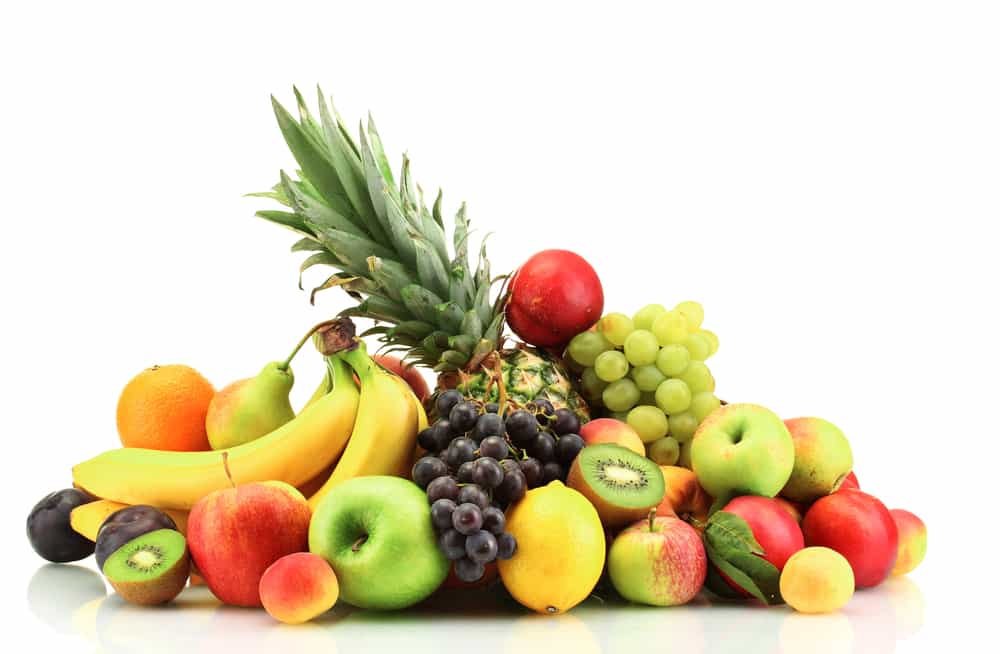Experts agree that a diet rich in fruits and veggies is the way to go. Fruits can provide essential nutrients, fibre and a host of other health benefits. If you enjoy fruits frequently, that’s great. The only thing to be aware of is that—like all foods—certain fruits have more calories than others, and some have a lot more sugar.
Remember, fruit is healthy and delicious. Keep enjoying it! Just because a fruit is more sugary than you’d expect doesn’t mean it’s comparable to eating sweets. Fruits are filled with a variety of vitamins and nutrients that make them much healthier than sweets. Plus, diets filled with fruits provide countless health benefits, while sweets on the other hand…not so much.
But if you’re curious about how much sugar is really in that mango, read on. We’ve compiled the best and the worst fruits—the “worst” fruits are those that have a sugar content higher than 10 grams and more calories than others.
Enjoy these fruits as much as you want. They’re lower in sugar content and they’re filled with antioxidants, cancer-fighting properties and loads of benefits to keep you healthy.
BLUEBERRIES
Blueberries are one of the most antioxidant-filled fruits you can eat! Blueberries have a pretty low glycemic index, and they have been found to benefit people with diabetes.
WATERMELON
Made up of nearly 82 percent water, watermelon is a delicious summer staple. While watermelon does contain sugar, it’s more probable that you’ll enjoy a few slices of the fruit rather than an entire watermelon. Even with the sugar, watermelon has been shown to lower levels of blood sugar and blood pressure.
RASPBERRIES
Half a cup of raspberries contains only 2.7 grams of sugar. Most of the carbohydrates found in raspberries come from their fibre content, which helps keep you feeling full.
LEMONS
Lemons are very low in sugar, high in vitamin C and have been found to protect against rheumatoid arthritis. The flavour of lemons can be enjoyed with just a zest or a squeeze. Add lemons to your tea, roast chicken or even pasta.
GUAVAS
Three ounces of a guava fruit contains only 4.7 grams of sugar. That’s great news because guavas have been found to help eyesight, prevent cancer and even promote weight loss.
GRAPEFRUITS
Half a grapefruit has only 8 grams of sugar. Grapefruits are also filled with vitamin C.
STRAWBERRIES
The beautiful red colour in strawberries makes them a powerhouse of nutritional value. The phenolic acid that gives strawberries their signature colour helps to regulate blood sugar. With only 7 grams of sugar per cup, strawberries are a great option for a healthy dessert.
BOYSENBERRIES
Boysenberries contain an impressive 9 grams of sugar for an entire cup. The tart berry is filled with fibre, folate, vitamin C and potassium.
BLACKBERRIES
Blackberries contain 4.8 grams of sugar per cup, which makes them a great treat. (Not mention they’re great for your heart.)
CRANBERRIES
Cranberries have an impressive array of phytonutrients in addition to vitamin C. They can taste pretty bitter to some, but that’s just due to their limited sugar content.
Now for the worst, as said before the worst fruits although they contain more sugar and calories they are still much better to snack on that sweets, crisps or milk chocolate.
FIGS
Fresh figs are filled with fibre and can help to lower blood pressure, but the fruit does contain a good amount of sugar too—100 grams of raw figs (or roughly one cup) contains around 16 grams of sugar.
BANANAS
Bananas are a great substitute for an energy bar before the gym. Filled with potassium and easily digested, they’re the perfect pre-workout snack. Still, with 14 grams of sugar in a medium banana, it’s important to eat them mindfully
MANGOS
Mangos are filled with soluble fibre in addition vitamins C, A and B6, however, the tasty fruit is pretty high in sugar, even by fruit standards. One mango contains 31 grams of sugar, so be sure to slice and share the sweet fruit.
GRAPES
One cup of grapes contains 15 grams of sugar. Still, grapes can help to lower the risk of diabetes, high blood pressure and heart disease.
POMEGRANATES
Pomegranate seeds are delicious and beautiful winter fruit, but one entire pomegranate contains about 39 grams of sugar, which is why you should try sprinkling the seeds on yoghurt instead of eating an entire bowl. Despite its sugar content though, the pomegranate has been shown to benefit the heart and even slow the process of ageing.
CHERRIES
Cherries are filled with vitamin C, which helps fight off disease, but eating a 100-gram serving of the sweet fruit contains 13 grams of sugar.
APPLES
The saying, “An apple a day, keeps the doctor away,” holds up because apples have been found to help regulate blood sugar and are a great source of dietary fibre. However, one medium apple has a surprising 19 grams of sugar.
DRIED FRUIT
Dried fruit is super tasty because it generally contains more sugar than raw fruit. One cup of raisins contains over 434 calories. Enjoy dried fruit as a treat or sprinkle sparingly it on dishes for an extra burst of sweetness.
PINEAPPLE
Pineapples are a great way to get a delicious load of vitamin C, and eating them can have a positive effect on digestion. But remember that one cup of pineapple chunks contains 16 grams of sugar, so enjoy the tangy fruit in moderation.
References:
https://www.health.com/food/best-worst-food-choices
https://www.aol.com/food/10-best-and-10-worst-fruits-you/
https://www.mensjournal.com/food-drink/25-worst-foods-fat-loss/











